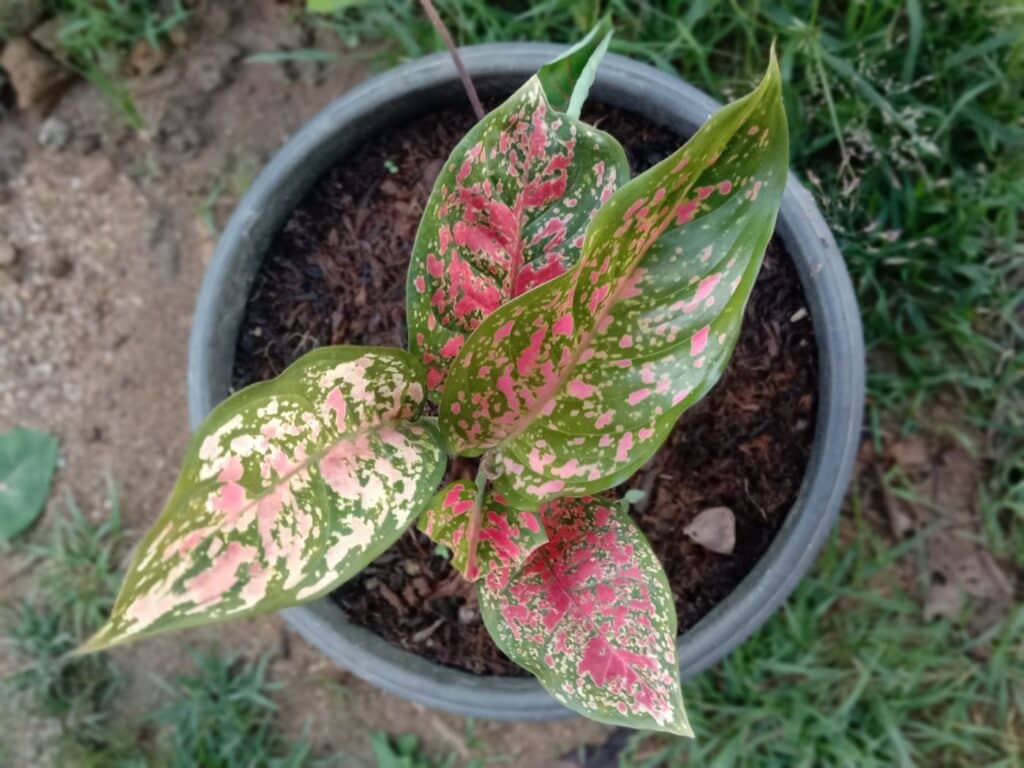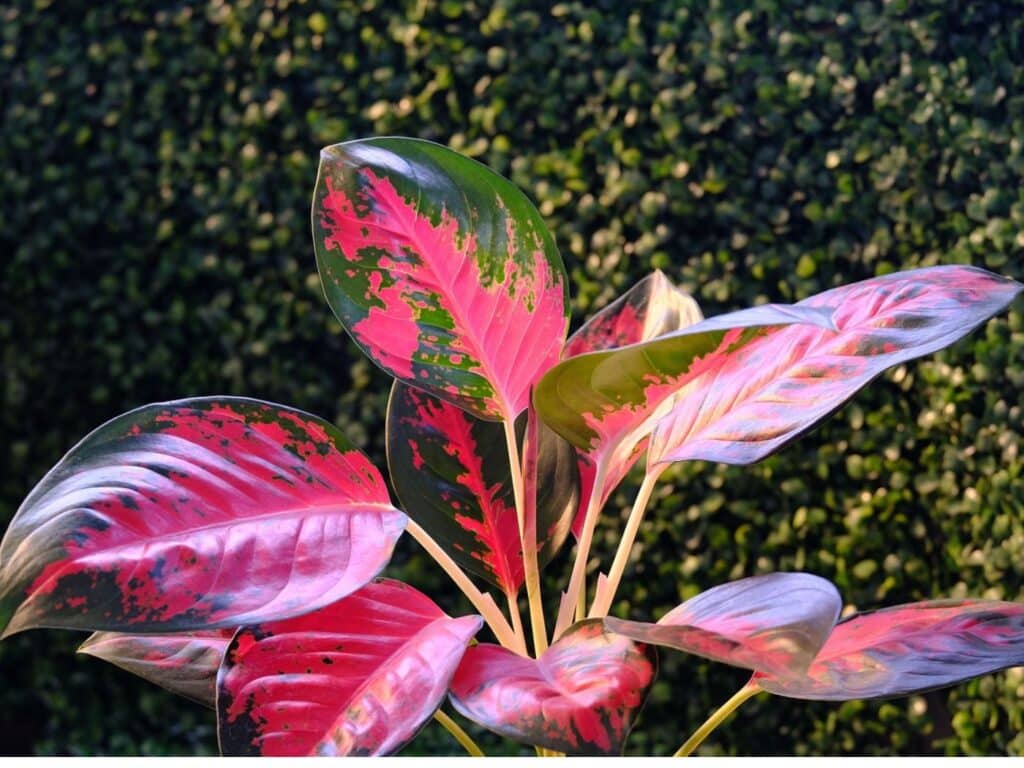Caring for your Chinese Evergreen can sometimes feel like walking a tightrope, especially when it comes to watering. Strike the right balance, and you’ll see your plant thrive, boasting lush, vibrant leaves that can transform any space. However, tip the scales too far in either direction, and you’re faced with drooping leaves or root rot, common signs of distress in these otherwise resilient plants.
Understanding the nuances of watering your Chinese Evergreen is crucial, not just for its survival, but for its flourishing. With a few expert tips and insights, you’ll find that achieving this balance isn’t as daunting as it seems.
This guide is designed to demystify the process, offering you a clear roadmap to ensure your Chinese Evergreen remains a stunning feature in your home or office. Let’s embark on this journey together, ensuring your green companion enjoys the hydration it needs, without the guesswork.
Understanding the Chinese Evergreen Plant
The Origin and Popularity of Chinese Evergreen
The Chinese Evergreen, or Aglaonema, originally hails from the lush forests of Asia and New Guinea. Its ability to flourish in low light conditions has made it a favored choice for indoor environments.
This hardy plant has not only become a staple in homes and offices for its air-purifying qualities but also for its striking foliage that adds a splash of elegance to any room. The plant’s resilience and its adaptability to various indoor conditions contribute to its widespread popularity.
Key Varieties and Their Water Requirements
Among the many varieties of Chinese Evergreen, each boasts distinctive patterns and colors on their leaves, ranging from deep greens to silvery whites. For example, the Aglaonema ‘Silver Queen’ showcases variegated leaves with hints of silver, while the Aglaonema ‘Red Siam’ mesmerizes with its vibrant red and green foliage. Despite their differences, all varieties share a common need for consistent moisture, but with a caveat – they despise soggy soil.
Overzealous watering leads to root rot, an unfortunate end for such a vibrant plant. To strike the perfect balance, allow the top inch of soil to dry out before giving your Chinese Evergreen another drink. This method provides the hydration these plants crave without overdoing it. Remember, the goal is a thriving plant, not a waterlogged one.
Essential Tips for Chinese Evergreen Watering

How Often to Water Your Chinese Evergreen
Determining the right watering schedule for your Chinese Evergreen involves a bit of observation and adjustment. Generally, these plants benefit from watering every 7-10 days. However, this frequency adjusts with changes in season, temperature, and humidity.
During warmer months, you may well find your plant thirstier, requiring a drink more frequently. Conversely, in cooler seasons, it’s crucial to reduce watering to prevent soggy soil.
A golden rule is to check the top inch of soil; if it feels dry, it’s time to water. If it’s still moist, wait a few days more. Listening to your plant’s needs rather than sticking rigidly to a calendar ensures it receives the right amount of hydration without the perils of over or under-doing it.
Signs of Overwatering and Underwatering
Understanding the signs your plant exhibits can save you from watering woes. Overwatering often shows as leaves turning yellow or dropping off, a signal that you may well be too generous with water or not allowing the soil to dry appropriately.
On the other end, underwatering makes itself known through droopy leaves that lose their vibrant green hue and become crisp to the touch. If the soil pulls away from the pot’s edges, that’s your cue to grab the watering can.
Remember, your Chinese Evergreen prefers consistency with a slight lean towards drying out between waterings. Adjusting your approach upon noticing these signs can help maintain the perfect moisture balance, keeping your plant both healthy and happy.
Best Practices for Watering Chinese Evergreens
The Ideal Watering Method for Healthy Growth
Assessing soil moisture by feeling the top inch is key to determining the need for water. If the Chinese Evergreen soil feels dry to the touch, it’s time to water. Pour water evenly around the plant until it runs out of the drainage holes, ensuring the entire root ball is moistened. This method encourages deep root growth and healthy plants. Avoid letting the plant sit in water, as this can lead to root rot.
Temperature and Humidity’s Role in Watering Frequency
Chinese Evergreens thrive in environments that mimic their natural habitat, which is warm and slightly humid. In warmer months, they may require more frequent watering, as both the air and soil dry out faster.
Conversely, during cooler months, water evaporation slows down, necessitating less frequent watering. Investing in a humidity tray or a small space humidifier can help in maintaining the optimal humidity levels around your plant, promoting vibrant growth without the need to constantly adjust your watering schedule.
Common Mistakes in Chinese Evergreen Watering
Using the Wrong Type of Water
Your Chinese Evergreen may well not be as fussy about its soil, but it’s a whole different story with water. Tap water, with its possible chlorine and fluoride content, can harm sensitive plants over time.
If you’ve noticed your plant’s leaves turning brown at the tips, the culprit could be the water you’re using. Instead, consider rainwater or distilled water for your green buddy. These types don’t have the chemicals that tap water does, making them a safer bet for keeping your plant happy and hydrated.
Ignoring Seasonal Watering Adjustments
Remember, your Chinese Evergreen’s thirst changes with the seasons. During the warmer months, it’s like us humans on a hot day – it can’t get enough water. But come winter, it’s more like a bear hibernating, needing far less to drink.
A common misstep is sticking to a rigid watering schedule year-round. This approach can lead to overwatering in the colder months, risking root rot.
Pay attention to your plant’s needs by checking the soil moisture more frequently in summer and easing off in winter. This strategy keeps your plant in prime condition, reflecting the natural water fluctuations it would experience in its native habitat.
Advanced Care for Chinese Evergreen
Fertilization and Its Impact on Watering
Proper fertilization can significantly affect your Chinese Evergreen’s watering needs. Adding a balanced, water-soluble fertilizer every month during the growing season, which typically spans from spring to summer, aids in the healthy development of your plant.
However, during fall and winter, reduce fertilizer application to once every two months to avoid over-fertilization, which can lead to a buildup of salt in the soil. This buildup may well not only necessitate increased watering to flush out the salts but can also harm your plant’s root system, leading to stunted growth or even death.
So, keeping a balanced fertilization routine directly supports a consistent watering schedule, ensuring your Chinese Evergreen remains healthy and vibrant.
Repotting Considerations and Watering
Repotting your Chinese Evergreen presents an opportune moment to evaluate and adjust your watering practices. When you repot, usually every two to three years or when the plant outgrows its current pot, choose a container that’s one size larger and has excellent drainage.
This is crucial as a larger pot with more soil requires more water, but proper drainage ensures that excess water can escape, preventing root rot. After repotting, monitor your plant closely for the first few weeks.
The fresh soil and changed environment can alter the plant’s watering needs until it acclimatizes. Adjust your watering method as necessary, ensuring the soil remains moist but never waterlogged, for the optimal health of your Chinese Evergreen.
Frequently Asked Questions
How often should I water my Chinese Evergreen plant?
Water your Chinese Evergreen when the top 1-2 inches of soil feel dry. This usually means watering approximately every 7-10 days, but adjust based on your home’s temperature and humidity.
What are the signs of overwatering and underwatering?
Overwatering can lead to yellowing leaves and root rot, while signs of underwatering include droopy, brown, and crispy leaves.
What is the ideal method to water a Chinese Evergreen?
Water thoroughly, allowing the water to drain fully. Avoid getting water on the leaves to prevent fungal infections.
How does temperature and humidity affect watering?
In higher temperatures and lower humidity, your Chinese Evergreen will require more frequent watering. During cooler and more humid conditions, reduce watering frequency.
Why is tap water not recommended for Chinese Evergreens?
Tap water contains chemicals like chlorine and fluoride, which can build up in the soil and harm the plant. Use filtered, distilled, or rainwater instead.
Should I adjust my watering routine with the seasons?
Yes, water less frequently in winter, as lower light levels and cooler temperatures reduce the plant’s water needs.
How does fertilization affect my Chinese Evergreen’s watering needs?
Fertilizers can alter soil moisture levels. Balanced fertilization supports consistent watering by maintaining healthy growth without drastically changing the plant’s water requirements.
What should I consider when repotting my Chinese Evergreen?
Choose a pot with proper drainage and use a well-draining potting mix to avoid waterlogging. Monitor the plant’s watering needs closely after repotting, as they may change.







